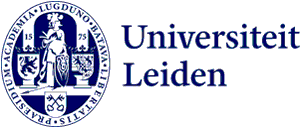
Cleveringa lectures: how the Polish government is distorting the history of the Holocaust
In Poland the commemoration of acts of resistance is being misused to distort the history of the Holocaust. That is what Cleveringa Professor Jan Grabowski said in his inaugural lecture on 26 November. In her lecture, the second Cleveringa Professor, Barbara Engelking, pointed to the often indifferent and passive attitude of the Polish people.
In her welcome speech, Rector Magnificus Hester Bijl spoke about the recent court case against the two Cleveringa professors, Engelking and Grabowski. ‘In nominating you, Professor Engelking and Professor Grabowski, the Faculties of Law and Humanities are showing their support for all academics who are under attack by the authorities in their own countries,’ Bijl said. ‘With this nomination Leiden University is echoing concerns in Europe about the challenge to the rule of law and academic freedom in Poland.’
Video Cleveringa lecture Barbara Engelking
Due to the selected cookie settings, we cannot show this video here.
Watch the video on the original website or
Engelking
Barbara Engelking researched different attitudes of Polish people towards Polish Jews during the war. These attitudes would become particularly important in the last phase of the Holocaust, when the surviving Jews were tracked down and murdered.
Indifference and passivity were probably the most common attitudes, Engelking explained in her inaugural lecture. She gave a number of reasons for this. The hardships during the occupation caused many Polish people to focus on their own problems and those of their direct family. Antisemitic views also made Poles feel alienated from Jews. The fate of their fellow compatriots simply did not interest them.
‘Many believed that they could not expose another human being to such a risk and forwent rescue.’
Then there were the heroes who were prepared to take great risks. They helped Jews out of compassion, but were sometimes also paid in money or labour. Many Poles, however, refused to help, which was understandable, Engelking said, given the risks of being killed themselves by the Nazis. Jews also had some understanding for this: ‘Many believed that they could not expose another human being to such a risk and forwent rescue.’
In her lecture Engelking distinguished between harmful attitudes, betraying Jews and worst of all: murder. She came to the – in her own words – pessimistic conclusion that the proclivity to evil is more fundamental and stronger than the proclivity to good. ‘The temptation of greed and the feeling of impunity, as well as common meanness, are a powerful mix that cannot be balanced by something so volatile as conscience, empathy and courage.’
Grabowski
In his inaugural lecture, Grabowski explained how Polish antisemitism, which was already present before the war, helped the Germans carry out their genocide. The Polish passport still bears the image of pre-war politician Roman Dmowski, a ‘vicious antisemite’. Dmowski wrote in 1934 that if Poland wanted to secure a bright future, the number of Jews in the country would have to be reduced. ‘The Nazis understand that if they want to organise Germany on national foundations, they have to destroy the Jewish influence on German society’, Dmowski wrote soon after Hitler seized power.
The question is thus not whether, but to what extent Dmowski’s hatred of the Jews facilitated the execution of German genocidal policies.’
Five million of the six million Jews who died in the Second World War died on what had been Polish territory before the war. Only two percent of the Polish Jews who were unable to flee the occupied territory, lived to see the liberation. ‘The question is thus not whether, but to what extent Dmowski’s hatred of the Jews facilitated the execution of German genocidal policies,’ said Grabowski. He believes there is a direct relationship between these ideas and the active contribution of members of the Polish population to the Holocaust.
National innocence
Dmowski’s ideology would also form the basis of the myth of Poland’s ‘national innocence’, said Grabowski. According to proponents of this myth, Poland was ‘a unique community of virtuous people which has valiantly resisted totalitarian oppression. The minorities (and most of all the Jews), repaid the hospitality and generosity of the Polish people with hostility, bad will and outright treason.’ Dmowski, said Grabowski, had a ‘prominent place in today’s official Polish, state-sponsored and state-enforced, historical narrative.’
The notion of ‘righteous defence’ was used against criticism of Polish behaviour during the war, Grabowski went on to say. According to this rhetoric, Polish people saved Jewish people en masse during the war. This defence marginalised the events and shifted the attention from the Jewish victims to the ‘brave and altruistic’ Polish. Grabowski explained how this defence tactic reared its head again and again in the decades that followed.
Video Cleveringa lecture Jan Grabowski
Due to the selected cookie settings, we cannot show this video here.
Watch the video on the original website or
After the nationalists came to power in 2015, the concept of ‘righteous defence’ was revived. Resistance heroes were celebrated with posters, films, exhibitions, articles, books, coins and paintings. Grabowski: ‘The nationalists did not invent anything new; they simply shifted priorities and placed more resources in the hands of people and institutions delegated on the “front of memorial struggle”.’ Like the myth of national innocence, righteous defence became part of the nationalist history policy.
Grabowski ended his lecture with a somewhat pessimistic conclusion. He offered to help correct the distorted view of history. ‘Each and every time a new commemorative plaque is unveiled, each time a new monument is erected to honour Poles rescuing the Jews, let’s celebrate Jews who – in the same location, in the same street – were denounced or killed by Poles.’ Grabowski said he would be glad to offer assistance and provide references. But, he added, ‘I am not holding my breath.’
Text: Tom Janssen
Photo's: Monique Shaw
